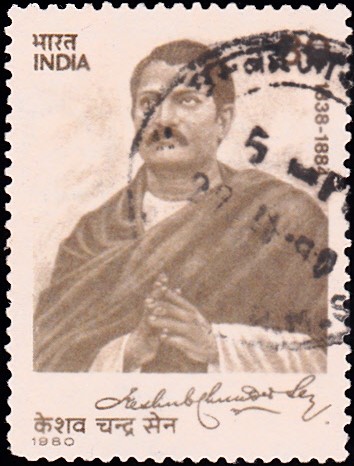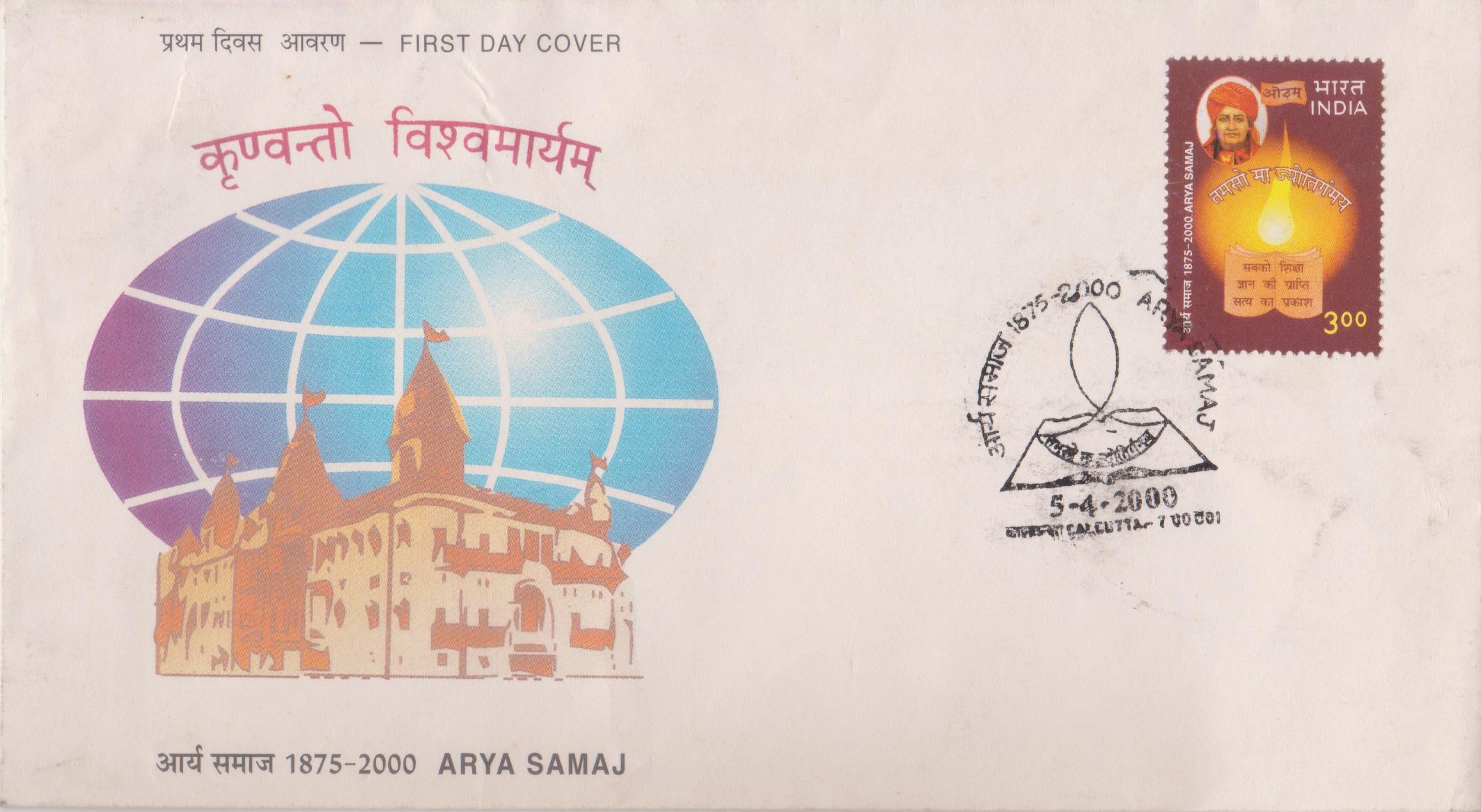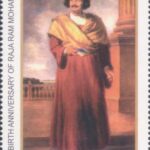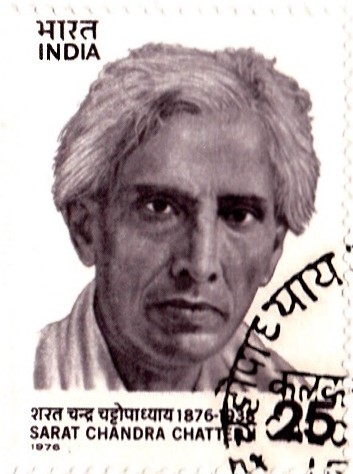
Keshub Chunder Sen
A commemorative postage stamp on Keshab Chandra Sen, an Indian Bengali philosopher and social reformer, founder of ‘Brahmo Samaj of India‘ and ‘Nava Vidhan‘ :
 Issued by India
Issued by India
Issued on Apr 15, 1980
Issued for : The Indian Posts & Telegraphs Department pays homage to an outstanding prophet of our social and religious reformation by issuing a special stamp.
Description of Designs : The stamp depicts the Portrait of the personality.
The first day cover shows a view of the Bharatavarshiya Brahmo Mandir, Calcutta.
Type : Stamp, Postal Used
Colour : Dark Brown
Denomination : 30 Paise
Overall size : 3.91 x 2.90 cms.
Printing size : 3.55 x 2.54 cms.
Perforation : 13 x 13
Watermark : Printed on water–marked adhesive stamp paper
Number printed : 30,00,000
Number per issue sheet : 35
Printing Process : Photogravure
Designed and printed at : India Security Press
Name : Keshub Chandra Sen
Born on Nov 19, 1838 at Calcutta, British India [now Kolkata, West Bengal]
Died on Jan 8, 1884 at Calcutta, Bengal Presidency, British India
About :
- In the renowned family of Sens of Coluotola in Calcutta, Keshub Chunder was born on 19 November 1838. He graduated from the Hindu College, which was founded in 1817, among others, by his grandfather, Ramkamal Sen, who was a scholar of repute and a luminary of the Bengal Renaissance. Young Keshub made a deep study of Philosophy, History, Sanskrit literature, Gita and the Vedas. Rajnarayan Bose‘s tract on ‘Brahmoism‘ deeply influenced him and in the year of India’s first war of independence (1857) he joined the Calcutta Brahmo Samaj. Soon thereafter he studied the Young Bengal Movement of the day and identified the gaps in the movement. Brahmoism was broadened to include social reforms like eradication of untouchability and casteism, spread of education among women, spread of vernacular and vocational education, stress on temperance etc. His career in social reform started at the age of 19 when he started an evening school for adults. Through legislation he sought to curb polygamy and child marriage and introduced inter-caste marriage.
- Keshub was a prolific writer and journalist. He made the Press an important national forum for social consciousness and amelioration. He started the ‘Indian Mirror‘ as a fortnightly in 1861 and made it into a daily in 1871. Many other journals followed quickly. He travelled extensively. From 1857 till his death in 1884 he travelled all over India, from North-West Provinces to Madras Presidency and also to England where he came in contact with Max Mueller, John Stuart Mill and Gladstone. During his life-time he set up many educational, social and spiritual institutions.
- After Rammohan Roy and Devendranath, Keshub is regarded as a major prophet of Brahmoism. He was not only a religious and social reformer but also a fervent nationalist. In a speech in Birmingham (1870) he declared, “the growth of society must be indigenous, native and natural.”
- Higher truths of theism were revealed through spiritual development. He made them practical experiences of life. In 1880 he preached the Navavidhan, the New Dispensation of the Religion of Harmony. He declared, “we believe in the Church Universal, which is the repository of all ancient wisdom and the receptacle of all modern science, which recognises in all prophets and saints a harmony, in all scriptures a unity and through all dispensations a continuity, which abjures all that separates and divides and always magnifies unity and peace, which harmonises reason, faith and Bhakti, asceticism and social duty in their highest forms and which shall make of all nations and sects one kingdom and one family in the fullness of time.“
- He transmuted to life eternal on 8 January 1884.








[…] among the first Indian military aviators. His grandfather was the philosopher and social reformer Keshab Chandra Sen. He was assigned to No. 70 Squadron RFC, based at Poperinge in West Flanders, Belgium and equipped […]